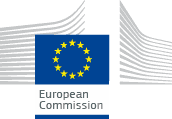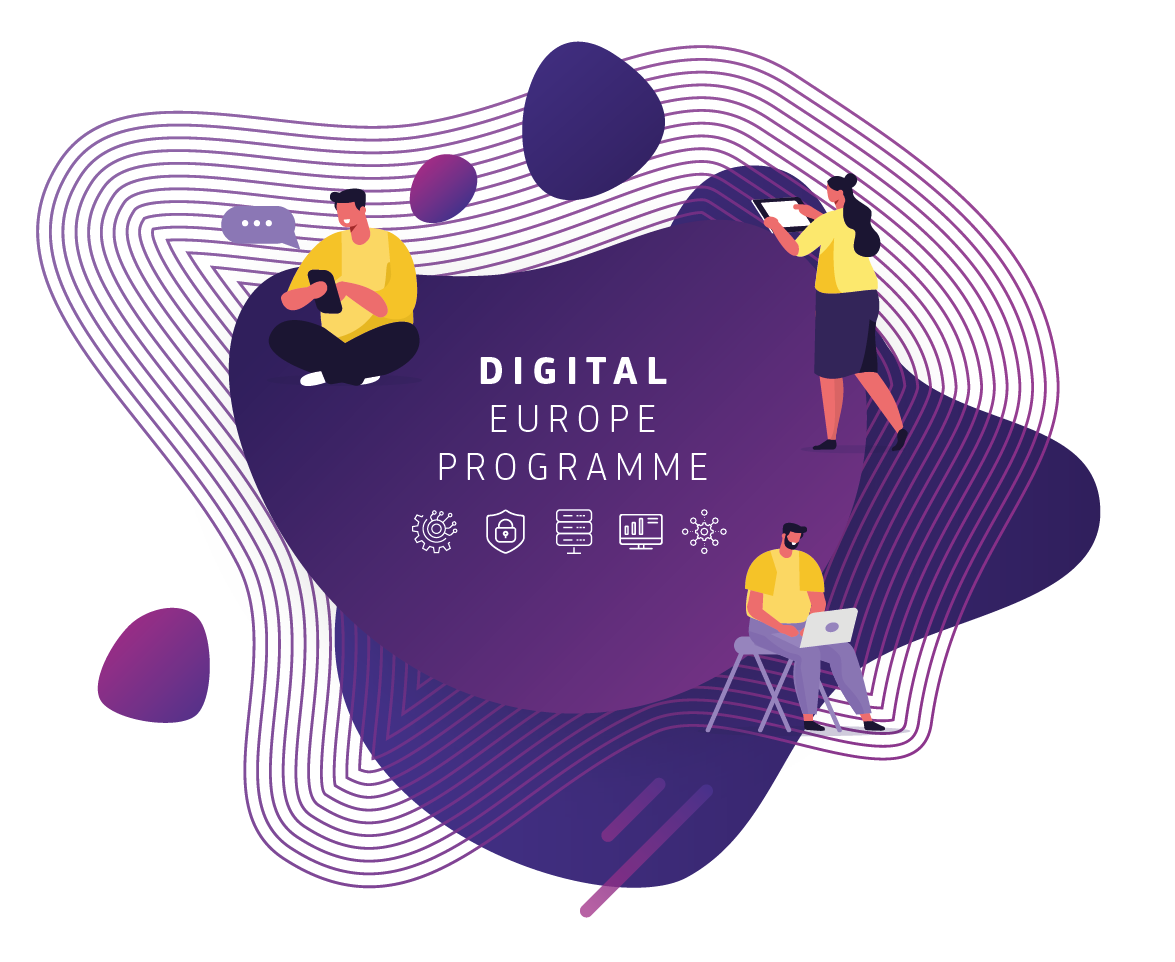Contributions submission
Introduction
Any user can contribute to ShowVoc through the "Contribute to ShowVoc" button located in the home page.
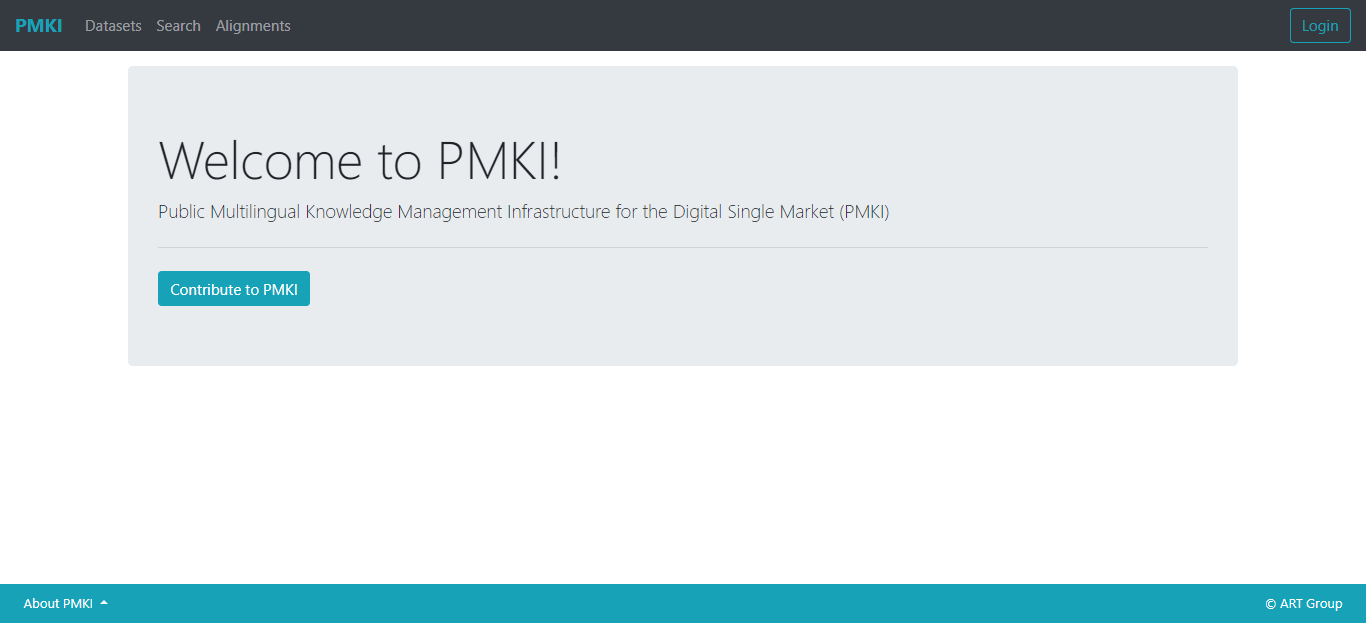
In the contribution page a form asks for personal information of the contributor.
The email address is quite important as it will be the same used for notifying the contributor about the outcome of the contribution evalutation by the administrator, if approved or rejected, and eventually for informing in how to proceed in order to complete the contribution.
Finally a Contribution field allow to choose the type of contribution that the user wants to request.
There are three different types of contribution:
- Metadata contribution
- Stable resource contribution
- Development resource contribution
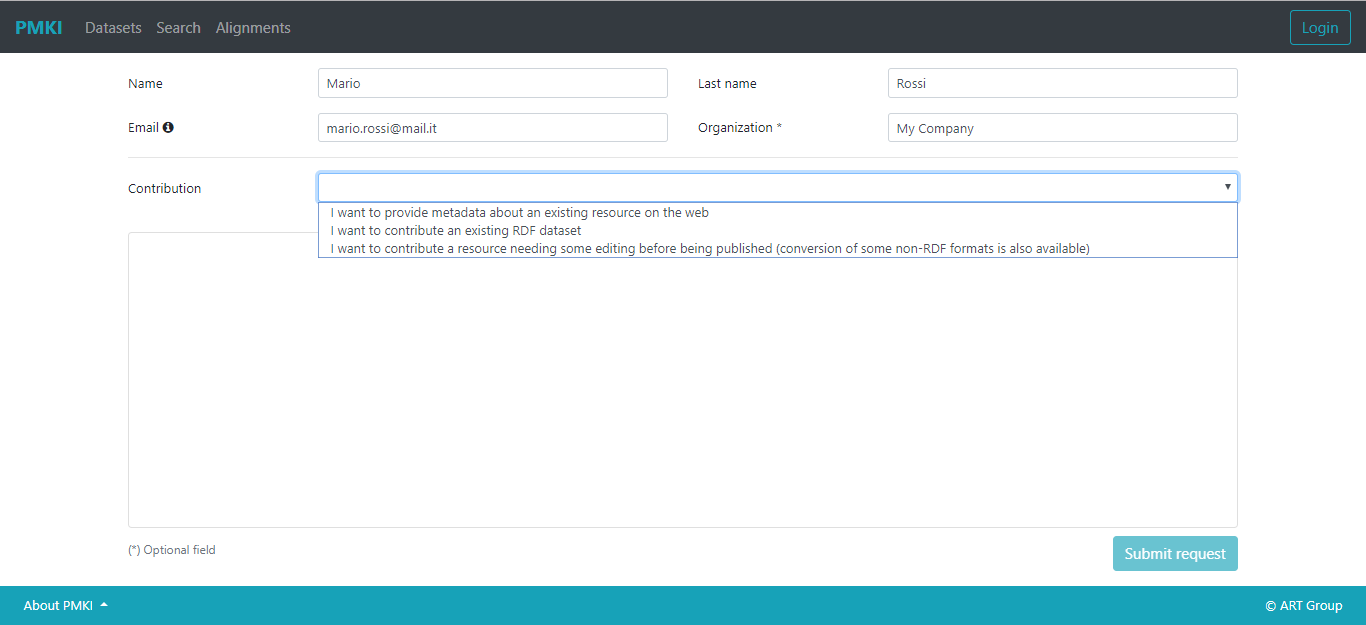
According to the selected one, the page shows a dedicated form in the blank space below. Once the form is properly filled, the contribution request can be submitted through the Submit button. Then the ShowVoc administrator will evaluate the request in order to approve or reject it.
For details about the contribution managment from the administrator point of view, see the dedicated page.
Metadata contribution
Metadata contribution allows the user to provide metadata about an existing resource available on the web.

The following fields are requested by the submission form:
- Base URI: The Base URI of the dataset. It can be optionally used to exploit the automatic discovering of the metadata simply by clicking the Discover button nearby.
- Resource name: The name of the resource.
- Identity: An IRI that identifies the dataset (optional, if not provided an IRI is automatically generated by the system).
- Dereferenciation system: Tells if the IRI of the resources defined by the dataset can be dereferenced (optional, unspecified is equivalent to unknown).
- Sparql endpoint: IRI of the SPARQL endpoint, if available (optional).
- URI space: An URI that is a common string prefix of all entity URIs in the dataset. In other words, the dataset namespace (optional).
If the contribution is approved by the administrator, the metadata is directly written to the metadata registry of ShowVoc.
Stable resource contribution
This contribution allows to contribute a mirrored version of a resource already published on its own portal.
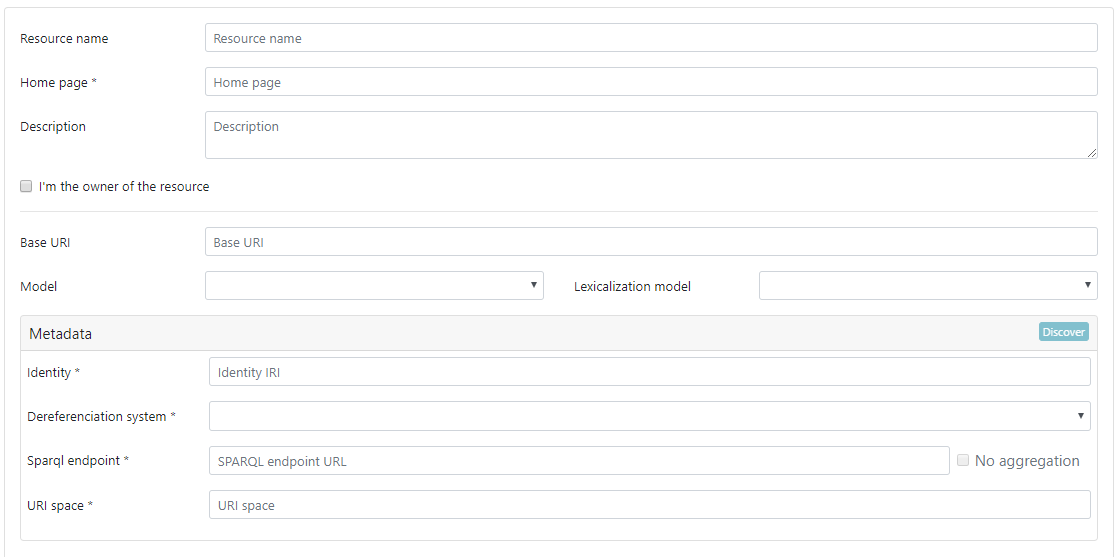
The following generic fields can be provided in the form:
- Resource name: The name of the resource.
- Home page: The website home page of the resource, if available (optional).
- Description: A description of the contributed resource. This is useful in order to inform the administrator of the treated domain of the resource.
More technical fields are also available:
- Base URI: The Base URI of the dataset. It can be optionally used to exploit the automatic discovering of the metadata simply by clicking the Discover button nearby.
- Model: The data model adopted by the resource. Those available are SKOS and Ontolex.
- Lexicalization model: The lexicalization model adopted by the resource. Those available are RDFS, SKOS, SKOS-XL and Ontolex.
If the request is approved by the administrator, a temporarily-private empty dataset (named after the resource name provided) is created waiting for the data to be loaded. The contributor will then receive an email with a link for loading the RDF data about the resource.

The form presented in the loading page asks for the contributor Email address and the Dataset name (written in the email) needed in order to cross checking them with the information provided during the contribution request submission. Here an RDF File needs to be provided as well by browsing the local filesystem. The selection of the file automatically focus the Format selector to the suggested choice. The Resolve imports combo box shows the following possible values, instructing the system on how to import vocabularies specified on transitive dependencies, that is, vocabularies that are owl:imported by the loaded data, or by other vocabularies in turn imported by it.
- From Web: transitive imports are resolved by trying to import the related vocabularies through their URIs specified in the owl:imports declarations.
- From Web with fallback to Ontology Mirror: if a vocabulary required by a transitive import is not found on the Web, then the Ontology Mirror will be used as a fallback solution.
- From Ontology Mirror: transitive vocabulary dependencies will be resolved locally on the Ontology Mirror.
- From Ontology Mirror with fallback to Web: if a vocabulary required by a transitive import is not found on the Ontology Mirror, then the Web will be used as a fallback solution
Once the data il successfully loaded, the resource is again subject of evaluation by the administrator that can decide if accept it, and make the dataset public, or reject it.
Development resource contribution
This contribution allows to contribute a resource that is not already available as linked data. Eventually is available the conversion from non-RDF formats.

Besides the same information provided in the Stable resource contribution, except for those reguarding the metadata, there is a further optional field Conversion required that allows to chose among: Excel, TBX and Zthes.
If the request is approved by the administrator, an empty dataset (named after the resource name provided) is created on a configured instance of VocBench dedicated to the development of these resources. Then an email will be sent to the contributor with the instruction on how to proceed. The workflow now depends on the previosly chosen conversion required:
- In case of TBX, Zthes or no conversion required at all, the email contains a link to the loading page and the name of the created dataset. The loading page is for the most the same of the one just seen for the stable resource contribution, it just differs for the Lifter chosen according to the conversion type (not changeable). Once the data is successfully loaded, another email is sent to the contributor with the details for accessing the VocBench instance, namely the link and the credentials of a new created user (if there is no user already registered for the given contributor email).
- Otherwise, in case of Excel conversion required, the email contains the link to the VocBench instance and the credentials for accessing it (also in this case the VB user is contextually created if there is no user already registered for the given contributor email). From VocBench the contributor is then able to exploit the tool SheetRDF for transforming the spreadsheet.
In all these cases described, the user can edit the resource as desired on VocBench and then, when ready, download it and submit a new stable resource contribution request to ShowVoc.




